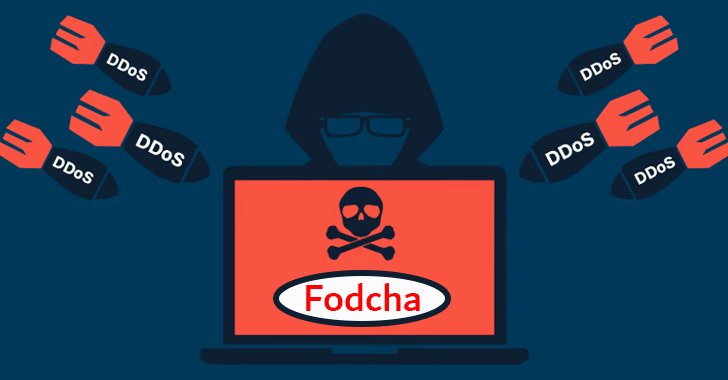A rapid spreading DDoS botnet has been found on the internet recently by CNCERT in collaboration with 360netlab security firm. Cybersecurity analysts have named this newly discovered malware “Fodcha.”
It is estimated that over 100 persons are targeted every day in DDoS attacks by this newly discovered malware that preys on the following things across the internet:-
- Routers
- DVRs
- Servers
While between March 29 and April 10, the Fodcha botnet spread over 62,000 devices, and there are more than 10000 daily active bots (IPs) in China alone, showing that the global infection is fairly large.
Due to the fact that it used the C2 domain name folded[.]in for its initial use and use of the chacha algorithm to encrypt network traffic, this botnet has been called Fodcha.
Here most of the Fodcha bots primarily use two Chinese services:-
- China Unicom (59.9%)
- China Telecom (39.4%)
Spread Method
The Fodcha attacks new devices using exploits that exploit n-day vulnerabilities in a number of different devices and a brute force cracking tool, named Crazyfia, to take over the devices.
Here below, we have mentioned all the devices and services targeted by the Fodcha botnet:-
- Android: Android ADB Debug Server RCE
- GitLab: CVE-2021-22205
- Realtek Jungle SDK: CVE-2021-35394
- MVPower DVR: JAWS Webserver unauthenticated shell command execution
- LILIN DVR: LILIN DVR RCE
- TOTOLINK Routers: TOTOLINK Routers Backdoor
- ZHONE Router: ZHONE Router Web RCE
Here to deploy the malware payloads to their users, the operators of Fodcha exploit Crazyfia’s scan results. Having gained access to vulnerable Internet-exposed consumer devices samples, they are able to use them effectively to perform a variety of attacks.
It has been identified that the attackers have targeted several CPU architectures, and among them, here below, we have mentioned the key ones:-
- MIPS
- MPSL
- ARM
- x86
It is possible to classify Fodcha samples into two different categories, and their primary functions are nearly the same. Here in the below image, you can see the two different categories and their illustration:-
During the ongoing operation, the Fodcha operators try their best to hide their:-
- C2s
- Load balance among the C2s
Decrypting Key Configs
From January 2022 to March 19, 2022, the threat actors behind Fodcha botnet have used the folded[.]in the command-and-control (C2) domain. After that, they switched to fridgexperts[.]cc due to the takedown of the initial C2 domain by the cloud vendor.
Moreover, for the security of its key configurations, such as C2 data, Fodcha employs a multiple-Xor method of encryption.
Once the decryption is done, we will obtain the C2 of Fodcha:-
- fridgexperts.cc
Here’s what NetLab stated:-









